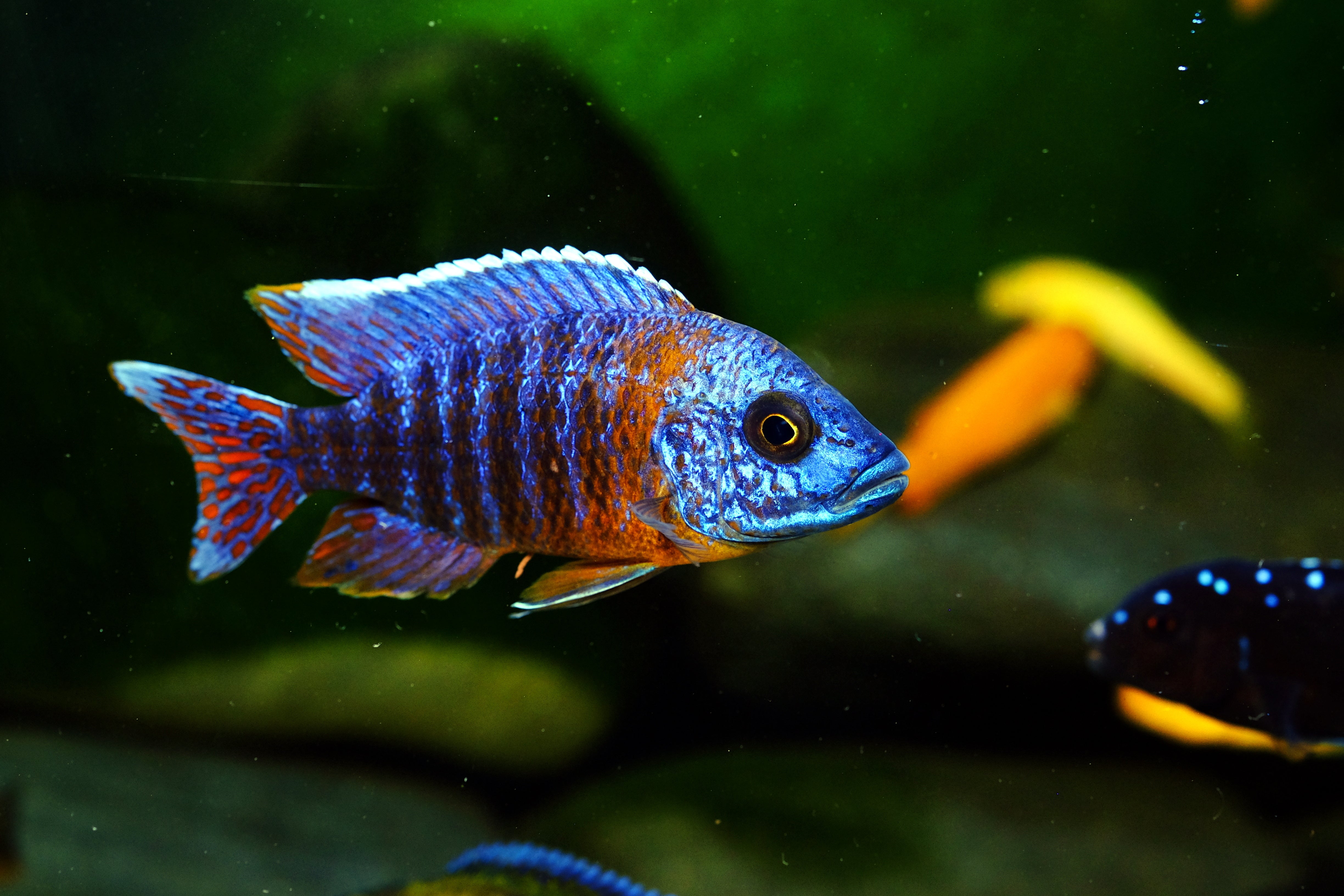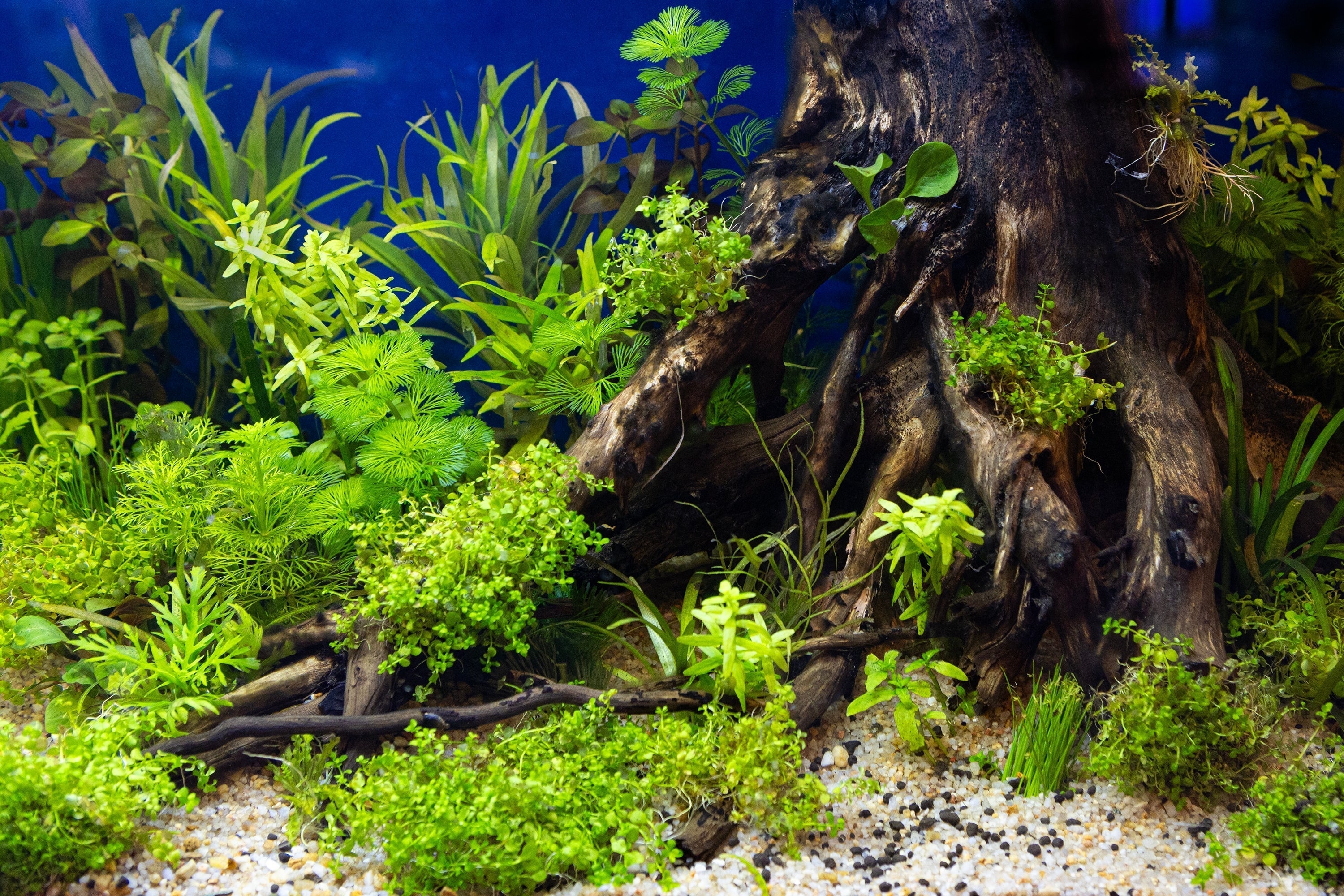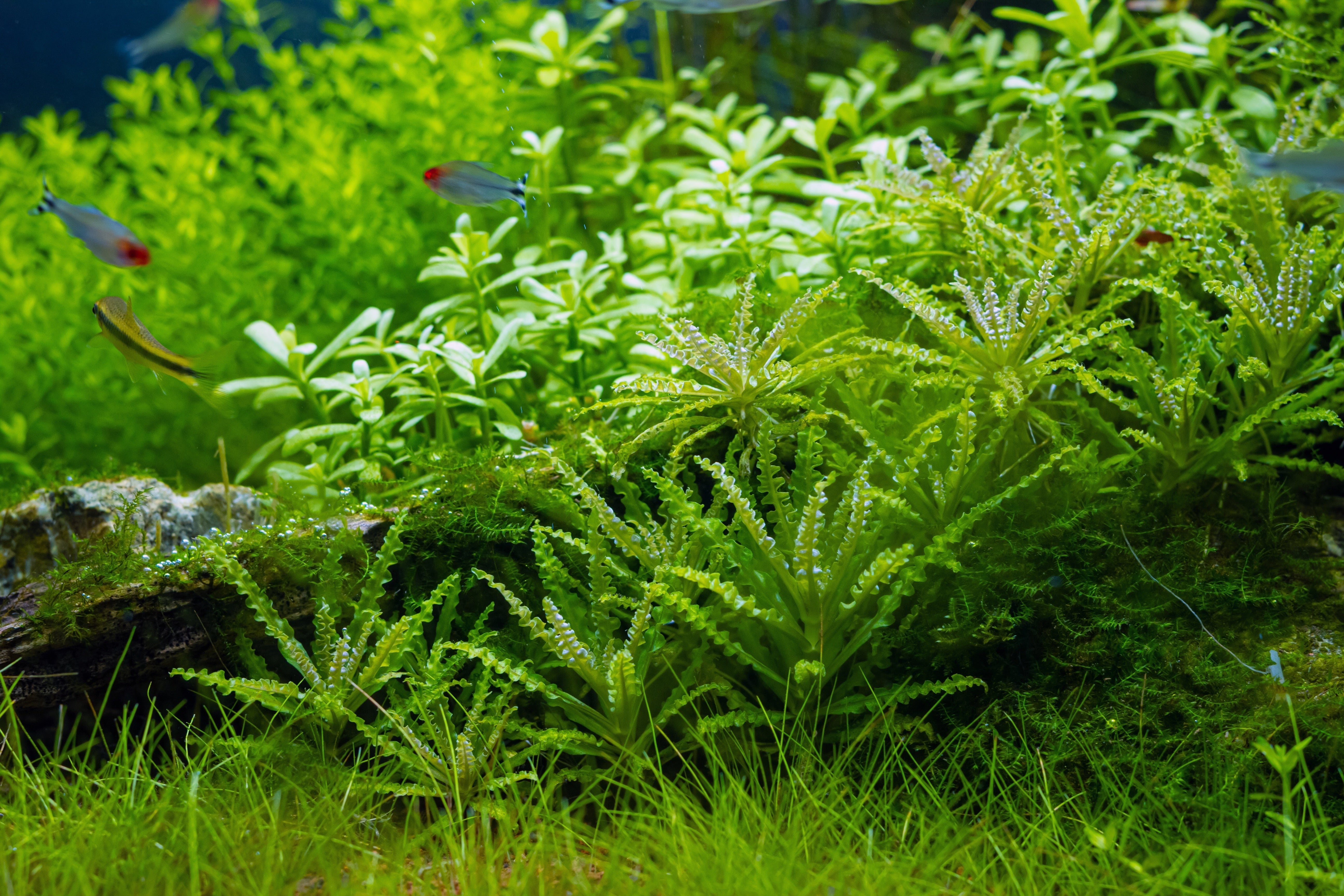Table of Contents
In this ultimate care guide, we will reveal the tips and tricks to keeping your Peacock Cichlids happy and healthy. With their vibrant colors and unique patterns, Peacock Cichlids bring an exotic touch to any aquarium. However, these beautiful fish require specific care and attention to thrive in captivity. From tank setup and water conditions to feeding habits and social behavior, we will cover every aspect of Peacock Cichlid care to ensure their longevity and well-being. Whether you are a beginner or an experienced fish keeper, this guide will provide you with valuable insights and practical advice on how to create the perfect environment for your Peacock Cichlids. Get ready to unlock the secrets of these stunning fish and embark on a rewarding journey into their world of beauty and wonder.
Understanding the Natural Habitat of Peacock Cichlid Fish
Peacock Cichlids (Aulonocara species) originate from Lake Malawi, a vast African lake known for its crystal-clear waters, rocky environments, and consistent temperatures. Understanding this natural habitat is crucial for replicating a comfortable home for them in your aquarium tank. In the wild, these Cichlids prefer rocky regions with plenty of hiding spots, which protect them from predators and help establish territories. Additionally, Lake Malawi is alkaline, so maintaining high pH levels in your tank is essential. This high alkalinity and hard water are not just beneficial but necessary for your Peacock Cichlids to exhibit optimal health and coloration.

Setting Up The Perfect Tank for Peacock Cichlid Fish
Tank Size
A minimum of 55 gallons for a group of Peacock Cichlids, with larger fish tanks recommended if possible. The extra space helps manage their active nature and territorial behaviors.
Substrate
Aquarium substrate like sand or fine gravel substrate is best, as it resembles the lake bed in their native habitat. Sand is also gentle on the fish, allowing them to dig without injury.
Décor
Include rocks, caves, and hollow decorations to provide hiding spots and help Peacock Cichlids establish territories. Avoid sharp edges that could injure their fins.
Lighting
Moderate aquarium lighting is ideal. While Peacock Cichlids don’t need intense light, proper illumination will showcase their colors beautifully.
Water Parameters and Temperature Requirements for Peacock Cichlid Fish
Peacock Cichlid fish are sensitive to water conditions, so maintaining stable parameters is essential:
- pH Level: Aim for a pH of 7.8 to 8.6 to match Lake Malawi's naturally alkaline waters.
- Temperature: Keep the tank temperature between 76-82°F (24-28°C).
- Hardness: Moderate to hard water with a hardness level of 4-6 dH.
- Filtration: Use a high-quality aquarium filter that can handle biological, chemical, and mechanical filtration to maintain water clarity and cleanliness. Consider a canister filter for larger tanks.
- Water Changes: Conduct regular water changes (20-30% weekly) to keep nitrate levels low, as these freshwater fish are sensitive to poor water quality.
Feeding and Nutrition for Peacock Cichlid Fish
Peacock Cichlids are omnivores, but their diet leans more toward high-protein foods. Provide a varied diet to keep them healthy and showcase their vibrant colors:
- Pellets and Flakes: High-quality Cichlid pellets and flakes food should form the staple diet.
- Live and Frozen Foods: Supplement their diet with protein-rich foods like brine shrimp, bloodworms, and daphnia. Avoid feeder fish, as they can introduce diseases.
- Vegetable Matter: Occasionally offer blanched vegetables like spinach or zucchini, or spirulina-based foods to add fiber.
- Feeding Frequency: Feed them twice daily, offering small portions they can consume in about two minutes to prevent waste buildup in the tank.
Breeding Peacock Cichlid Fish: Tips and Techniques
Breeding Peacock Cichlids in captivity is possible with the right setup and attention to detail:
- Creating Breeding Conditions: Ensure ideal water parameters and a stress-free environment. Raising the tank temperature to 82°F may encourage breeding.
- Male-to-Female Ratio: Keep a male-to-female ratio of 1:3 to reduce stress on females, as males can be aggressive when courting.
- Mouthbrooding Behavior: Peacock Cichlids are mouthbrooders, meaning females carry fertilized eggs in their mouths for about 3 weeks. During this period, provide a calm environment to avoid stress.
- Caring for Fry: Once the fry is released, transfer them to a separate tank with a sponge filter to prevent them from being eaten by adults. Feed the fry baby brine shrimp and finely crushed pellets until they grow larger.

Image of Pink Red Peacock Cichlids
Maintaining the Cleanliness and Hygiene of the Tank
Tank cleanliness is crucial for Peacock Cichlids, as they are susceptible to poor water quality:
- Regular Water Changes: Perform weekly water changes of about 20-30%.
- Gravel Vacuuming: Use a gravel vacuum to remove leftover food and waste, especially if using a sand substrate.
- Algae Control: Control algae growth by cleaning glass and fish decorations as needed. Adding a few algae-eating tank mates can help, but choose compatible species.
- Filter Maintenance: Clean your filter according to the manufacturer’s instructions to ensure efficient filtration.
Tank Mates and Compatibility for Peacock Cichlid Fish
Compatible Cichlids
Other Malawi cichlids, especially species with similar temperaments, can coexist with Peacock Cichlids. The Aulonocara and Mbuna species are popular choices, but ensure enough space to prevent territorial conflicts.
Catfish Species
Synodontis catfish are a fantastic choice as bottom dwellers in a Peacock Cichlid tank. Their peaceful nature and bottom-dwelling habits keep these Catfish out of the Peacock Cichlids’ way, and they help keep the tank clean by eating leftover food.
Plecos
Certain plecostomus species (like the Bristlenose Pleco) are another great addition, as they help manage algae growth and generally stay out of the cichlids' territory. Be sure to provide hiding places for the Pleco, as cichlids may display some territorial behavior.
Rainbowfish
These larger schooling fish are often recommended as they can handle the semi-aggressive behavior of Peacock Cichlids, and their active swimming adds variety to the tank.
Non-Compatible Fish
Avoid smaller, more passive fish species like Guppies, Neon tetras, or Dwarf Gouramis, as Peacock Cichlids may see them as prey. Additionally, overly aggressive Cichlid species like some Mbunas should be avoided if space is limited, as they may stress out the Peacock Cichlids.
Live Aquatic Plants for Peacock Cichlid Fish
While Cichlid tanks are often devoid of plants due to the fish's habit of digging and uprooting them, there are some hardy aquatic plants that work well with Peacock Cichlids:
Anubias
Known for its durability, Anubias such as Anubias Nana, Anubias barteri, and Anubias Nana petite can tolerate the high pH and hardness levels of a cichlid tank. Its broad, sturdy leaves can also withstand occasional digging or nudging.
Java Fern
Java Fern is extremely resilient and does not require planting in the substrate. Instead, this Fern plant can be attached to aquarium rocks and driftwood, which keeps it safe from the digging activities of Lake Malawi Cichlids.
Java Moss
Like Java Fern, Java Moss For Sale can attach to decorations and rocks, making it an ideal choice for a Peacock Cichlid tank. It also provides a natural feel to the tank without adding maintenance concerns.
Vallisneria
Vallisneria species like Vallisneria spiralis and Jungle Vallisneria grow tall, provide cover and mimicking the cichlid’s natural environment in Lake Malawi. The long leaves can offer a natural hiding place and some territorial boundaries.
Floating Plants
Floating plants like Red Root Floater or Salvinia Minima can add shade and reduce light intensity, creating a more subdued environment that helps Peacock Cichlids feel secure.
Conclusion
Caring for Peacock Cichlids is a rewarding experience, and with the right knowledge, you can keep these vibrant aquatic fish healthy and happy in your aquarium. By understanding their natural habitat and recreating it within your tank, ensuring ideal water conditions, feeding them a balanced diet, and choosing suitable tank mates, you can enjoy the full beauty of Peacock Cichlids. With patience and consistency, these stunning fish will thrive, bringing color and liveliness to your aquarium for years to come. If you are considering buying Peacock Cichlids for sale, visit our Splashy Fish tropical fish store to buy these Cichlids online or at our aquarium in Virginia for other freshwater fish for sale, freshwater shrimp for sale, live aquatic plants for sale, and other aquarium supplies.
Peacock Cichlids Care Frequently Asked Questions (FAQs)
How often should I feed my Peacock Cichlid fish?
Feed them twice daily, offering small portions they can consume within two minutes.
Are Peacock Cichlids easy to breed?
Peacock Cichlids can be bred in captivity, with males courting females and females mouthbrooding eggs for about three weeks.
Are Peacock Cichlids aggressive?
Peacock Cichlids are generally considered semi-aggressive, especially when compared to other cichlid species. They are territorial and may display mild aggression, particularly towards fish of similar size or appearance, as they establish and defend their territories. However, they are less aggressive than Mbuna cichlids, making them a suitable option for a community tank with other compatible Malawi cichlids and peaceful bottom-dwelling species. Ensuring a spacious tank with plenty of hiding spots and keeping a balanced male-to-female ratio can help reduce aggressive behavior, creating a more harmonious environment.



























